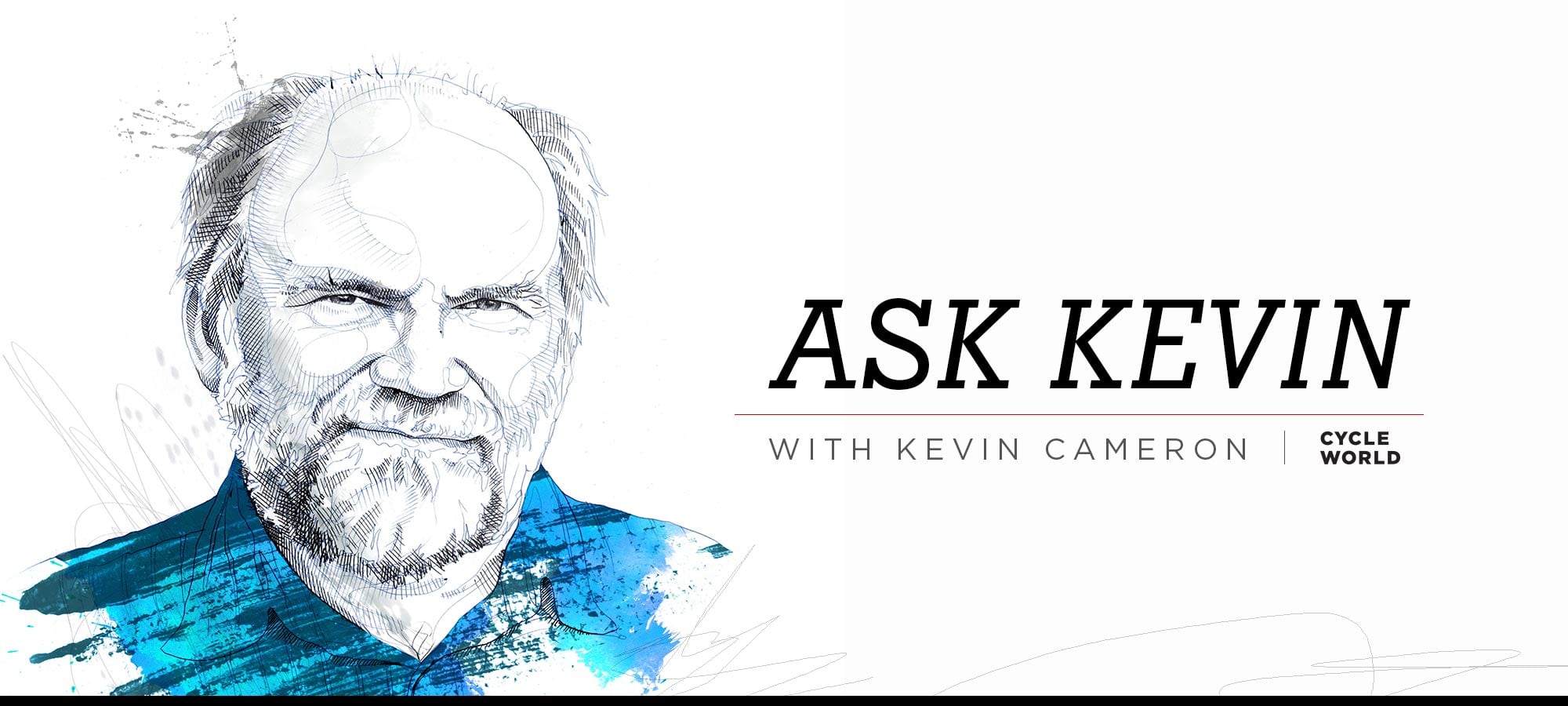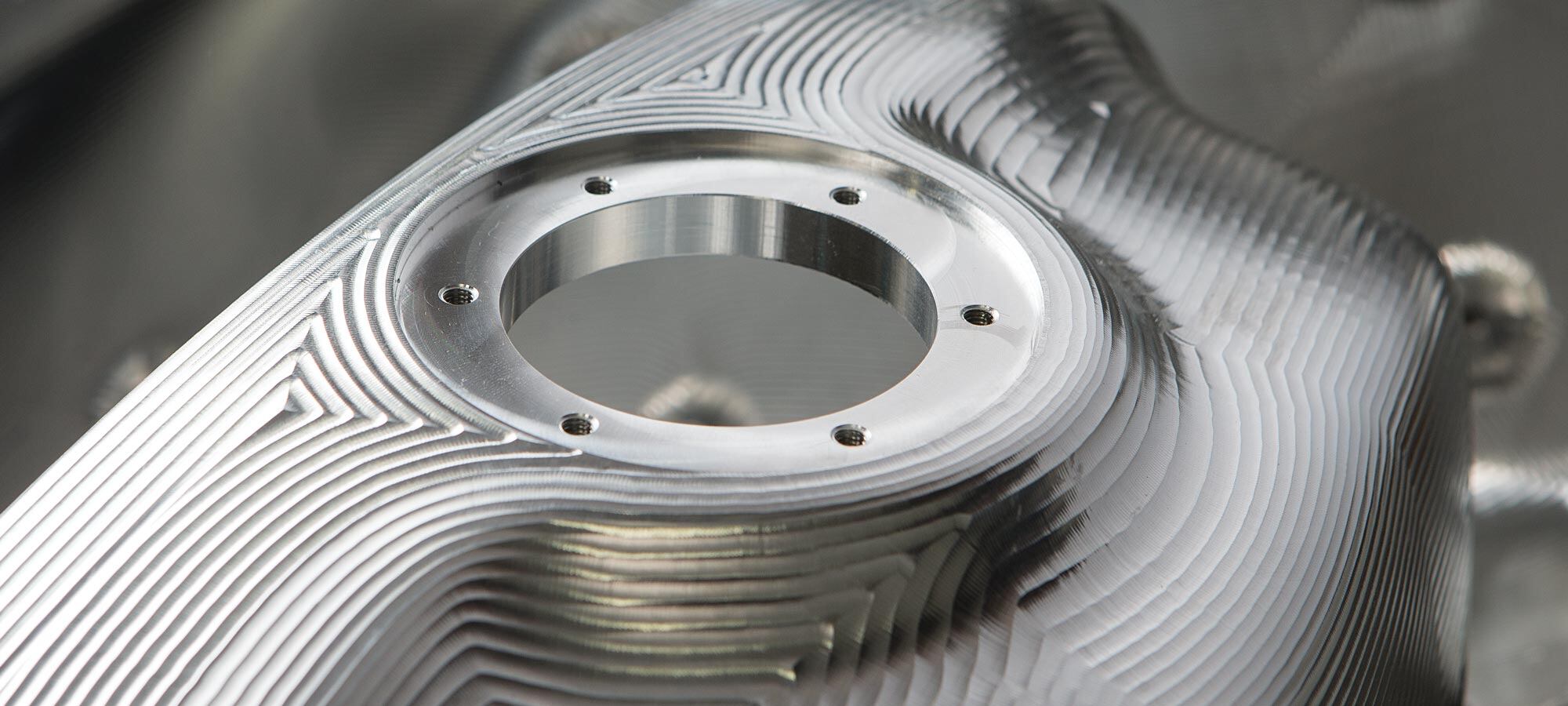
 |
|
|
#1 |
|
All the news that's fit to excerpt
Name: newsie
Location: who knows?
Join Date: Jun 2008 Motorcycle(s): only digital replicas Posts: Too much.
|
[cycleworld.com] - The Romance of Metals
Over thousands and thousands of years humans have refined the production and use of metals. What is the appeal of metals over other materials?
Click here to view on their site.  Kevin Cameron has been writing about motorcycles for nearly 50 years, first for Cycle magazine and, since 1992, for Cycle World. (Robert Martin/)Nine to eleven thousand years ago humans saw that native copper (free copper, not in the form of ore) had unfamiliar properties. They could change the shape of this stuff by hammering it—a new kind of stone that didn’t smash to bits! At first, however, it was mainly a decorative curiosity. By seven to eight thousand years ago they learned to smelt copper from its ores and cast it into shapes. The metal business was getting serious. Four to five thousand years ago, they began to deliberately alloy copper with 10 percent tin to make the much more durable bronze. That metallic revolution continues to this day. Trains, boats, planes, skyscrapers, bridges, and motorcycles are mostly made of metals. Metals can be very strong, but other materials, such as fine fibers of glass, carbon, or Kevlar, are stronger yet. What is the enduring appeal of metals? Related: Why Titanium Is A Motorcycle’s Favorite Metal—From The Archives  Why metal instead of other materials? The most obvious answer: ductility. Jeff AllenThe answer is that metals are ductile. Unlike hard, brittle materials such as glass, stone, or concrete, metals don’t snap under heavy load. They bend or stretch or shear. Metals have high toughness; it takes a lot of energy to push them all the way to failure. In the standard texts on metals you will find the words “elongation to failure,” which tells us how much the material must be stretched to break it. Work is force times distance, and it is the elongation ability of metals (the “clinginess” of their atoms to each other) that provides the distance. The force comes from the high yield strength of particular metals. Toughness is the two, multiplied together: the work required to achieve failure. Little energy is required to initiate failure in brittle materials, and in many cases the failure propagates through the material in a flash. Kevlar fibers have fabulous tensile strength over 400,000 psi, but their elongation to failure is only 2.4 percent. On the other hand, multiphase metals (chosen for high-class con-rod cap bolts) can display tremendous elongation-to-failure of 30–50 percent. Related: Everything You’ve Ever Wanted To Know About Aluminum What gives metals ductility (the ability to change shape under stress without snapping or crumbling)? Metals crystals are permeated by a “gas” of delocalized valence (bonding) electrons. If you stress a metal to its yield point, atoms are forced to slide past one another, but fracture doesn’t occur because this “gas” of electrons allows those sliding atoms to bond just as tightly to new neighbors as they had to their original ones. Applied load can change the dimensions of a metal part, but it may have to be deformed a great deal before actually breaking. The source of this “gas” is the loosely bonded valence electrons of metal atoms. In the closely packed structure of a metal, a negative valence electron is not strongly bonded to any one atom (rendered locally positive by the departure and freedom of some of its electrons) but is attracted to all, strongly holding the material together. The more such valence electrons a given metal has (up to about six), the greater its strength, hardness, and melting point. Related: The Finest Swedish Steel The action of that electron gas is familiar to all of us: Dip a silver spoon into hot coffee and see how fast its handle becomes too hot to hold. Those roving electrons also give metals their electrical conductivity. Push charge-carrying electrons with an electric or magnetic field and they move. That electron motion is electric current. Those extremely small and fast-moving electrons, colliding their way through the closely packed arrangement of metal atoms, quickly distribute energy. For us humans, the essential property of metals is the self-healing ability of metallic bonding, which we call ductility. This allows them to be given almost any desired form: rolled into sheets, forged into complex shapes, or drawn into wire. The work continues.
__________________________________________________
I'm a bot. I don't need no stinkin' signature... |
|
|

|
 |
 Similar Threads
Similar Threads
|
||||
| Thread | Thread Starter | Forum | Replies | Last Post |
| [RideApart] - US-Produced Lithium-Ion Batteries Made From Recycled Metals Coming Soon | Ninjette Newsbot | Motorcycling News | 0 | September 14th, 2023 04:35 AM |
| [roadracingworld.com] - â??Remaining Erik Buell Racing Assets Sold To Atlantic Metals | Ninjette Newsbot | Motorcycling News | 0 | August 6th, 2015 03:50 PM |
| [RoadRUNNER] - The Romance of Riding | Ninjette Newsbot | Motorcycling News | 0 | December 1st, 2013 03:22 AM |
| DIY: fixing scratches in polished metals | CThunder-blue | 2008 - 2012 Ninja 250R Farkles | 15 | November 18th, 2010 12:29 AM |
| [topix.net] - Simple Jack | Perform Metals CR2L Lift | Ninjette Newsbot | Motorcycling News | 0 | August 9th, 2010 03:20 PM |
|
|